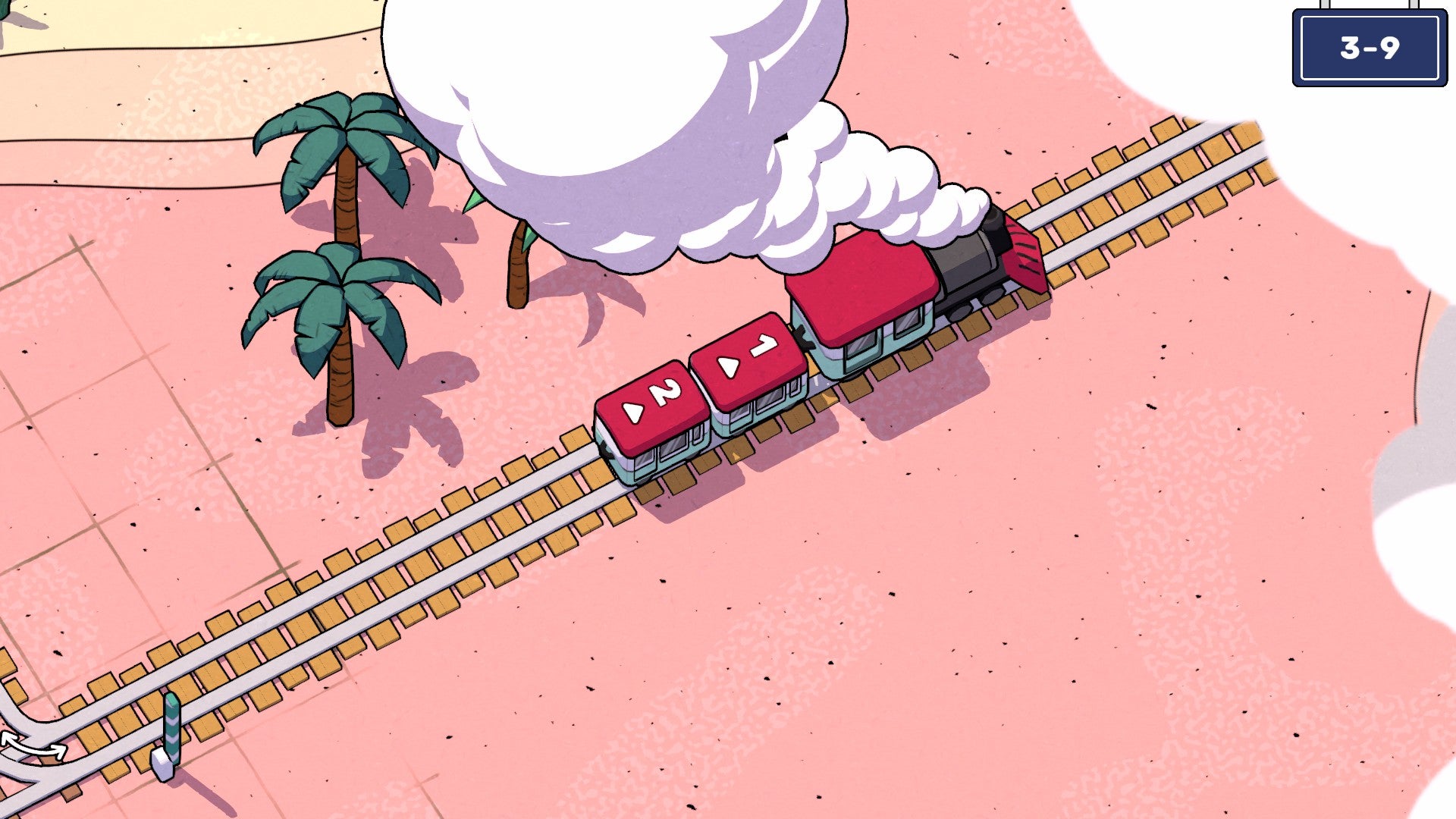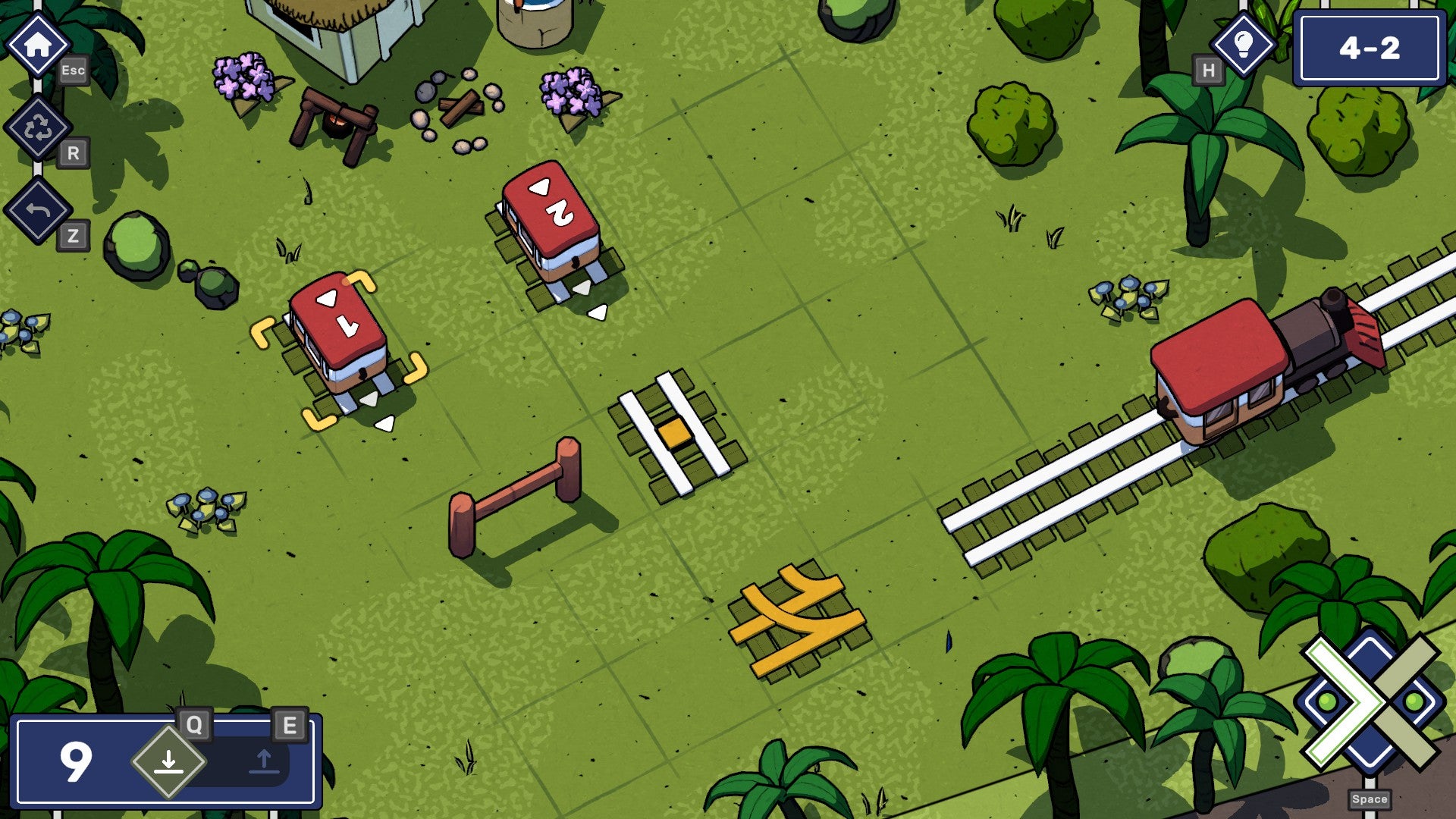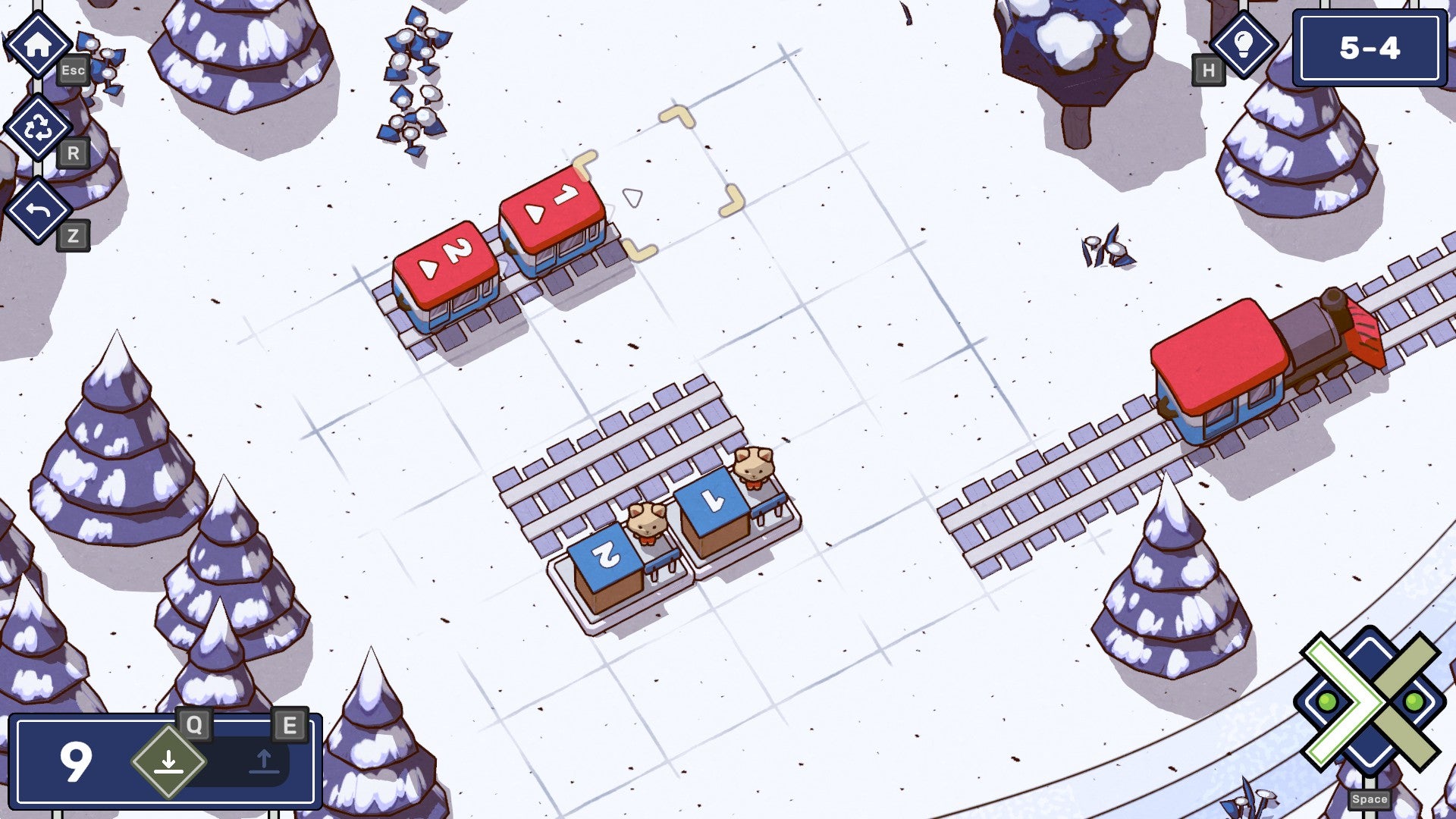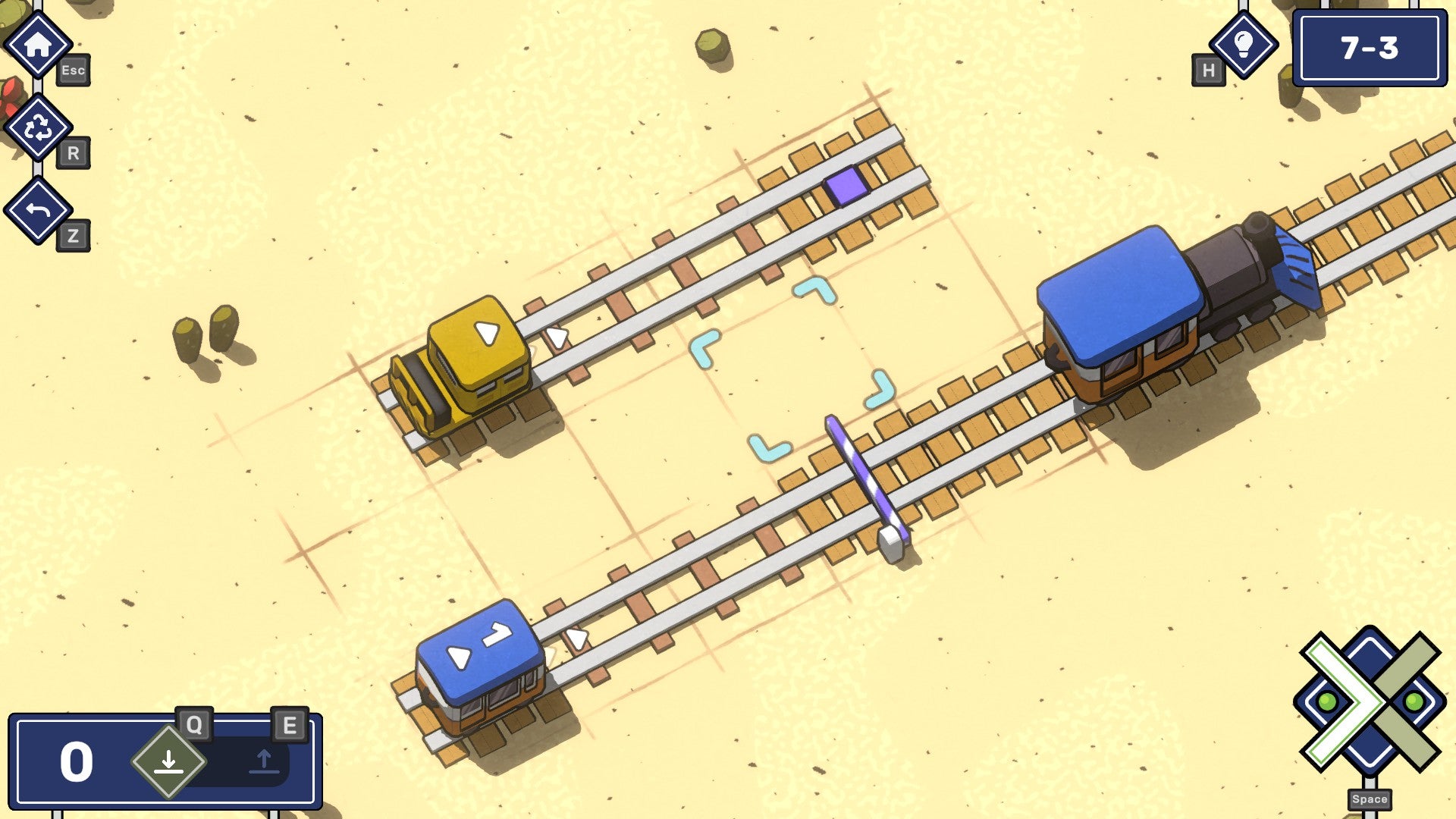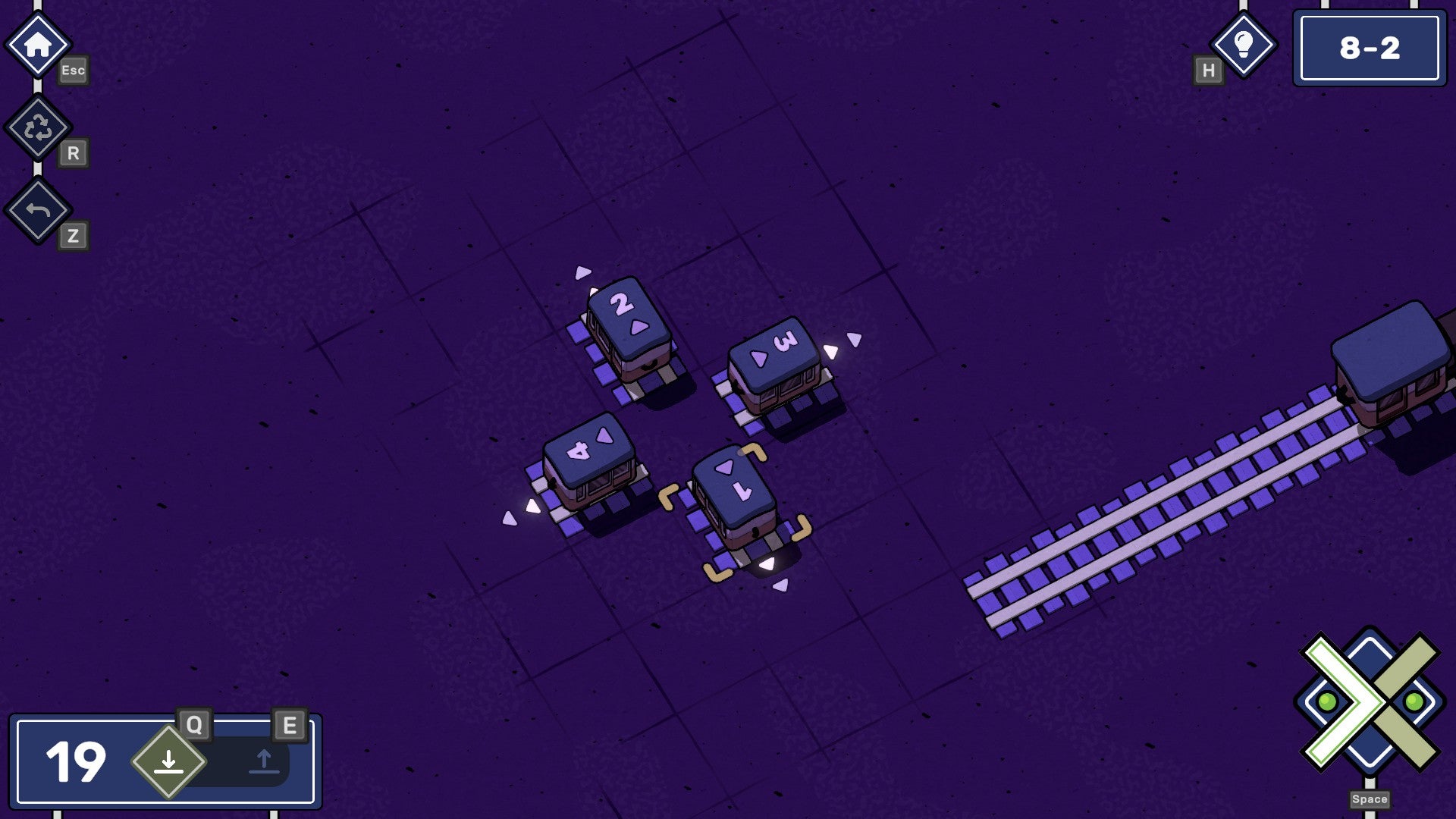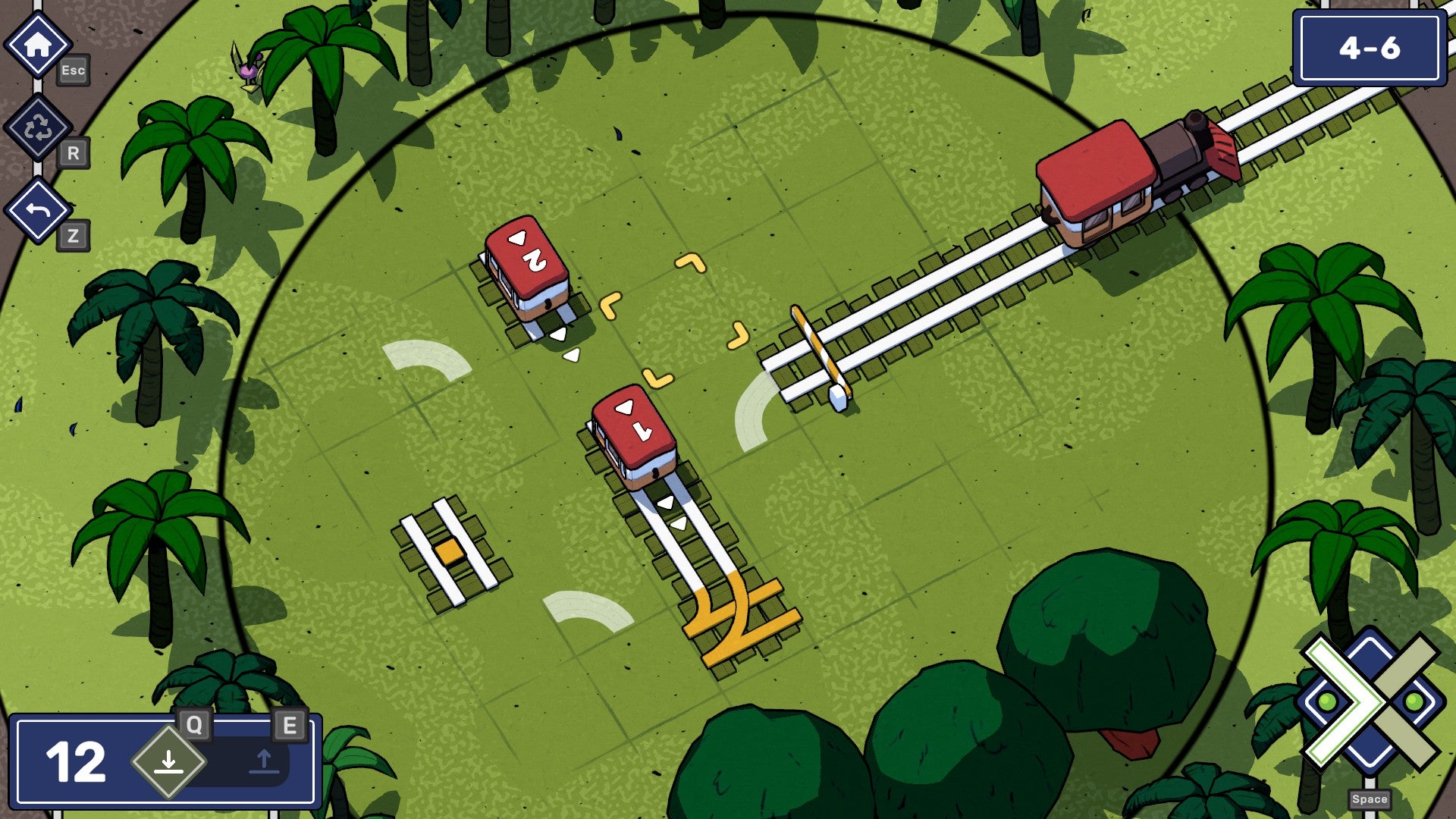In Afterburn’s adorable train puzzler Railbound, however, two carriages are a cause for celebration. In a game that’s about guiding numbered compartments onto the back of an engine (using a limited number of track tiles to get them there in the right order), two-carriage puzzles offer the perfect amount of cerebral head-scratching. They’ve got a bit more bite than simply guiding a single carriage to its destination, but they’re not so complicated that they’ll repeatedly make you reach for the hint button to help you fill in the gaps. Railbound has a tendency to be a bit too abstract in its later stages, but more on that in a sec. All you need to know right now is that there are plenty of smart ideas to wrap your head around here, and that you’ll be grinning from ear to ear by the time you reach the end of the line. Railbound’s handsome presentation goes a long way in creating its cosy, comforting feeling of puzzle-y cleverness. Its warm colour palette and cel-shaded visuals immediately call to mind the same kind of pastoral scenes as Dorfromantik – and heck, if you squint a bit, these jolly little steam trains could almost be the perfect facsimile of the ones that potter about in Toukana’s chill village builder. Even Railbound’s ambient soundtrack has a similarly calming, peaceful vibe, and together with its simple, clear UI and control scheme (which works just as well on a controller as it does with a mouse and keyboard), it all adds up to create an agreeable, friendly atmosphere to noodle away in with your trial-and-error track designs. The first world acts as a brisk tutorial, introducing you to simple obstacles, track loops and multiple carriages, but each subsequent world has its own unique hook, ranging from teleporting tunnels, barriers, switches, signals, and eventually actual platforms where you can pick up passengers. Later levels will often combine several of these elements together, but not before Railbound has fully explored each individual idea on its own. It does a great job of making sure you’ve got the tools and necessary know-how to tackle these more complicated combinations, and each world’s core set of levels build and evolve in increasingly pleasing and delightful ways. However, for a game that prides itself on taking a more relaxed approach to its track-based puzzles, Railbound can sometimes feel like it’s moving a bit too fast for its own good. For example, most worlds only have around ten core puzzles to complete before you’re whisked away to the next one, and with each puzzle rolling seamlessly into another (courtesy of a rather gorgeous transition of completed trains disappearing into a puff of smoke which then morphs into the cartoon clouds of the next overhead scene), it can sometimes leave some ideas feeling undercooked. That’s mostly because a lot of Railbound’s best puzzles are squirrelled away into separate cul-de-sacs, requiring you to dip back into the main menu screen and peel off down a different track to complete them. These additional puzzles will often riff on the layout of a particular stage, so logically it makes sense to try and complete them at the same time, but the game’s relentless obsession with ploughing on toward the finish line runs counter to this, like its suffering from its own kind of tunnel vision. It’s a shame, as I would have loved the option to linger a little longer in these captivating offshoots, or at least have a couple more of them incorporated into the central route. Thankfully, getting back to the main menu screen is pretty much instantaneous, so you needn’t worry about any delays worming their way into your puzzling itinerary. I also appreciated the option to unlock every puzzle from the off rather than having to complete them one by one. However, (in my review build, at least) I would have preferred the hint system to be enabled by default, as you’re almost certainly going to need it later on. Railbound’s end-game puzzles can be quite daunting without a bit of guidance, and the most troublesome ones either require too many mental gymnastic leaps or are so freeform that even knowing where to start can be a challenge. The good news is that this is a hint system done right, with one press offering a couple of small clues as to where certain track pieces are meant to be placed, with another press offering a handful more and so on. It doesn’t tell you the answer outright, leaving just enough leeway to maintain the illusion of having solved it on your own terms - and usually that first small nudge was all I needed to send me on my way. Aside from these late-game niggles, Railbound is an absolute charmer. While many of its 150+ puzzles could perhaps be better integrated into its mainline puzzle path, this is still a game where you’ll want to explore every nook and cranny to see how it’s going to test you next. There’s a lot to like in what Afterburn have created here, especially if Dorfromantik’s high score tables have left you yearning for a more traditional kind of puzzler in a similarly cosy landscape. With a total journey time of roughly three to four hours, Railbound is one departure you won’t want to miss.
